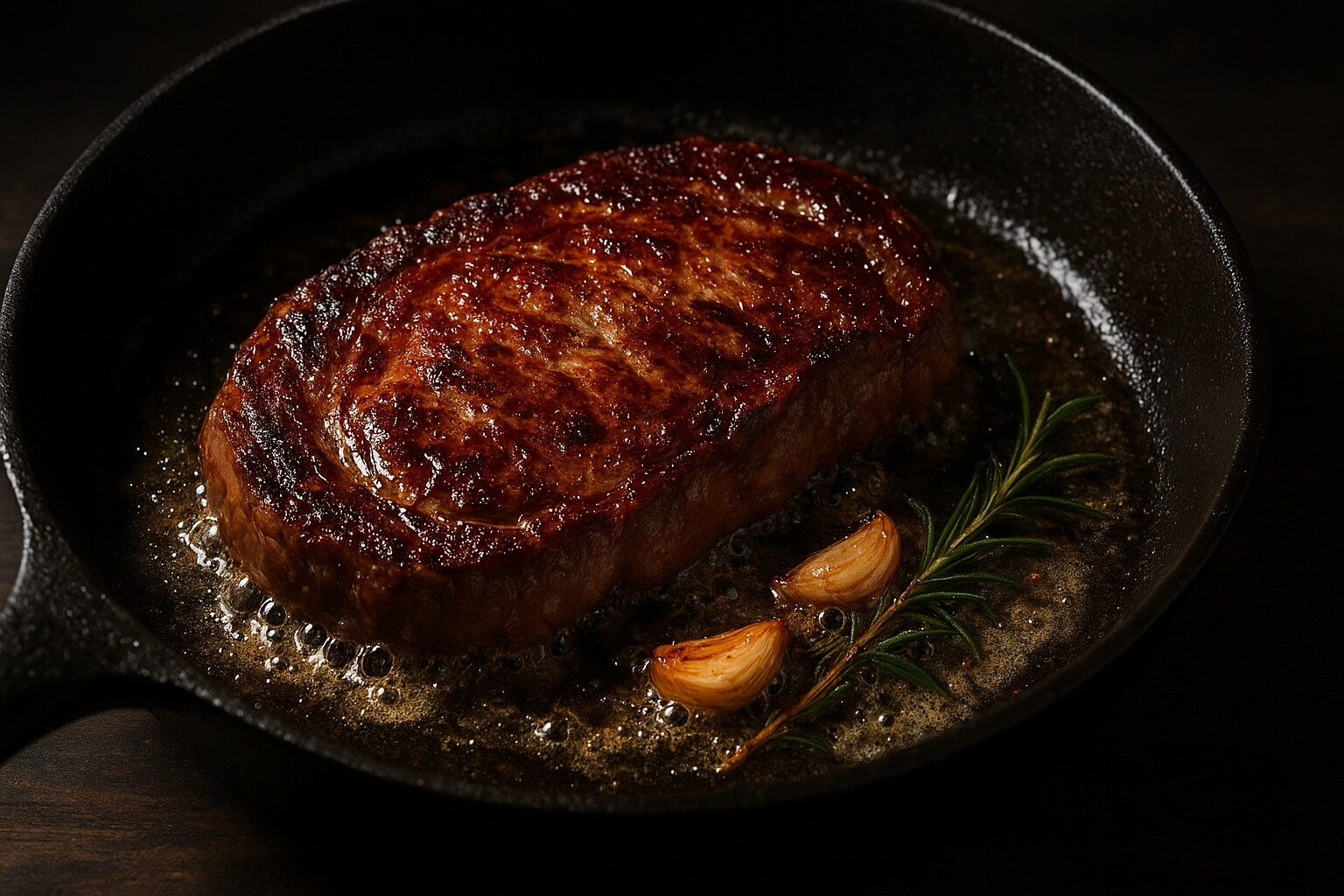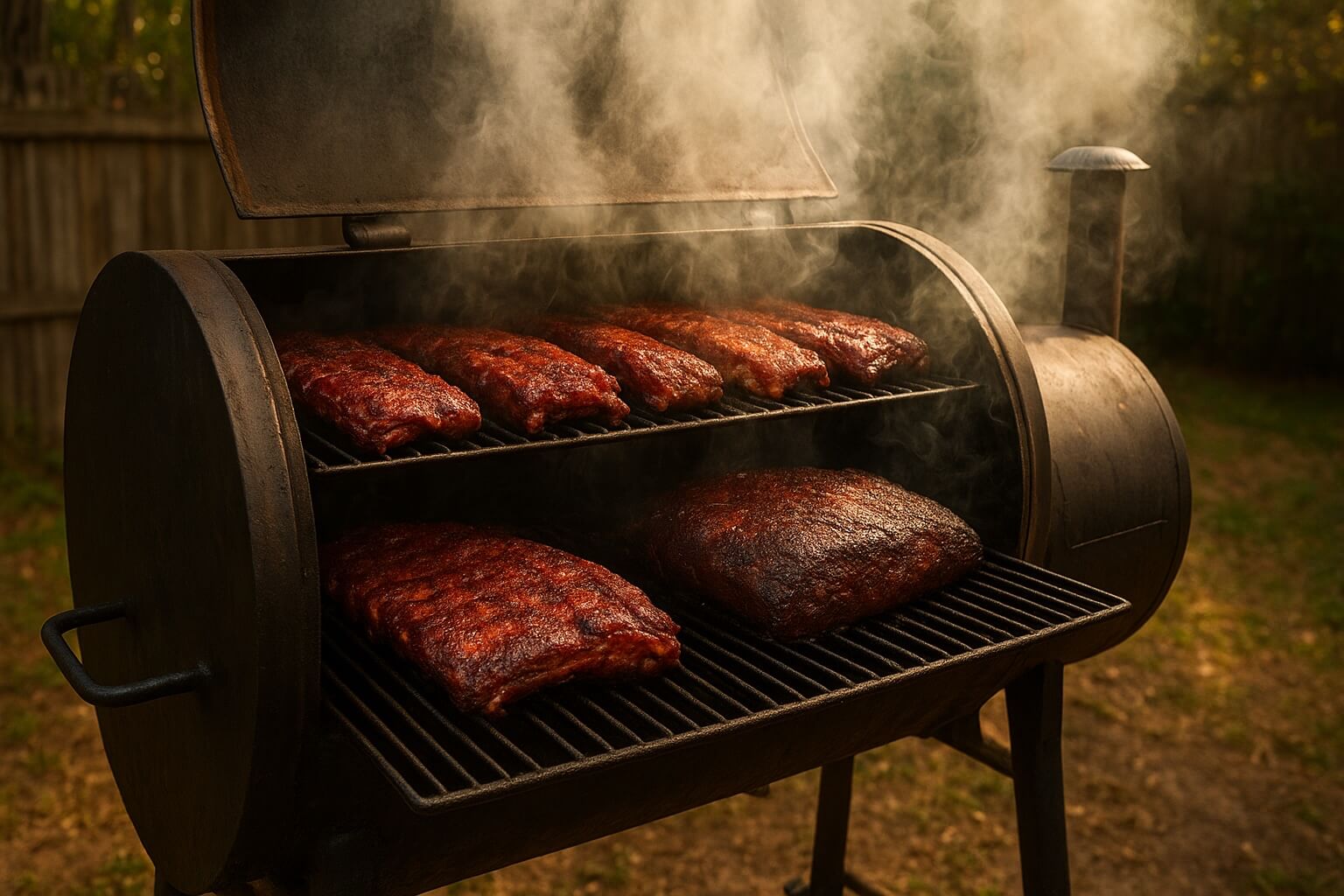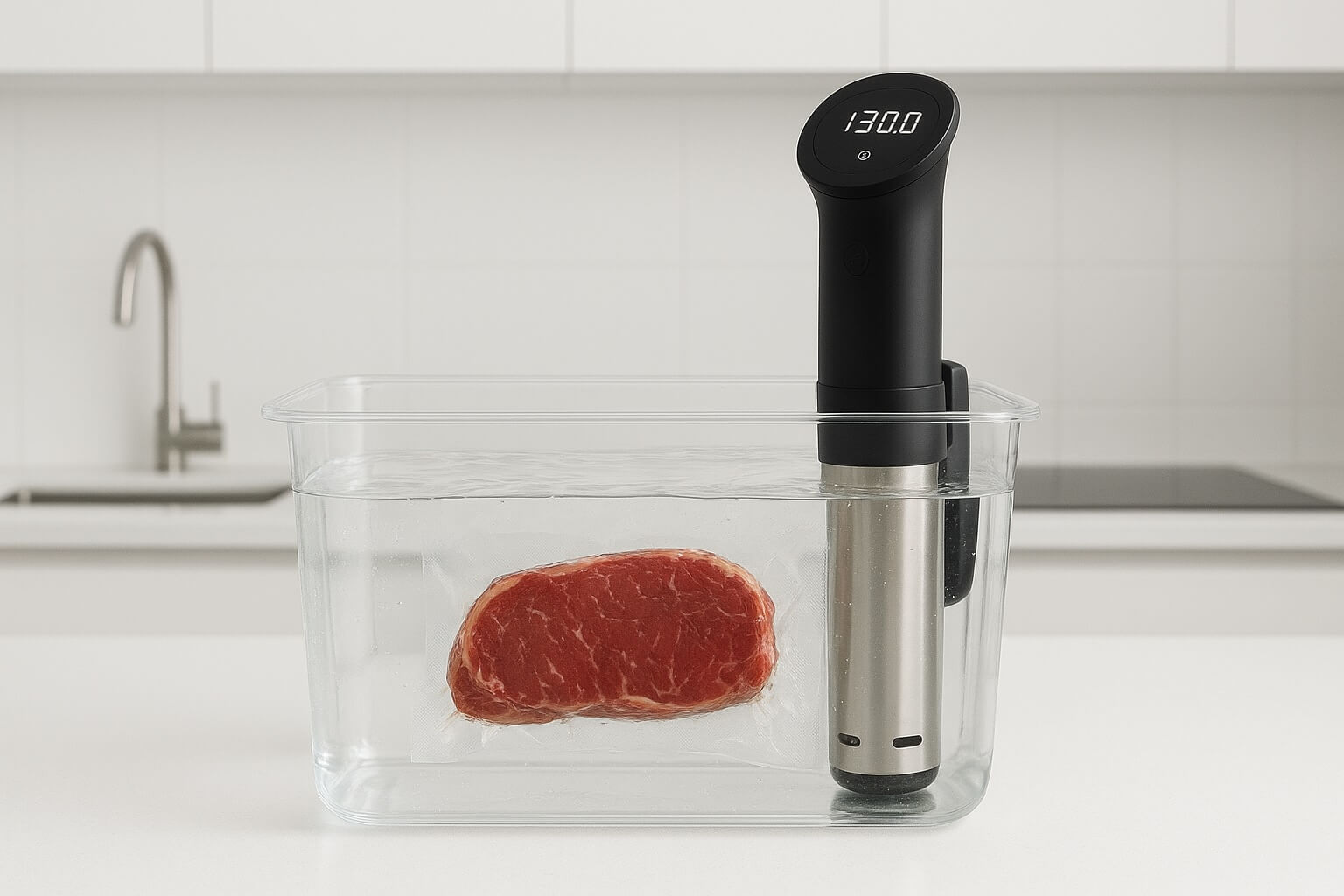Next-Level Meat Cooking
Cooking meat isn’t limited to pan-frying or oven-roasting. Techniques like reverse searing, smoking, and sous vide are popular with professional chefs, because they deliver consistent doneness, deeper flavor, and more control than traditional approaches.
Reverse Searing
Reverse searing flips the usual process of cooking meat. Instead of searing first and finishing in the oven, you cook the meat gently at a low temperature, then finish with a hot sear for a perfect crust.

How It Works
- Slow cook first Place your steak, pork chop, or roast in a low oven (95–120 °C / 200–250 °F) until it’s just below the target temperature.
- Rest briefly Let the meat sit for 10–15 minutes.
- Sear hot and fast Finish in a ripping-hot cast iron skillet or on the grill, about 1–2 minutes per side, to build a crisp, flavorful crust.
Benefits
- Even doneness edge-to-edge
- Better crust development without overcooking
- Works perfectly with thick cuts (ribeye, tomahawk, pork loin)
Smoking
Smoking infuses meat with deep, complex flavors while cooking it low and slow. Hardwood chips like hickory, apple, or oak provide distinctive aromas, making smoking a cornerstone of barbecue culture.

Types of Smoking
- Hot smoking (95–130 °C / 200–265 °F): both cooks and flavors meat
- Cold smoking (20–30 °C / 68–86 °F): adds smoke flavor without cooking — best for fish, cheese, or cured meats
Tips for Smoking Meat
- Use a dedicated smoker, grill, or even a stovetop smoker box
- Maintain consistent temperature for hours
- Pair wood type with protein (e.g., applewood with pork, oak with beef brisket)
👉 AmazingRibs: The Science of Wood and Smoke
Sous Vide
Sous vide (“under vacuum”) involves sealing food in a bag and cooking it in a precisely controlled water bath. The technique guarantees consistent doneness from edge to edge.

How It Works
- Vacuum seal (or use a zip-top bag with water displacement)
- Submerge in a water bath at the desired temperature (e.g., 54 °C / 129 °F for medium-rare steak)
- Cook for 1–3 hours depending on thickness
- Finish with a hot sear for flavor and texture
Benefits
- Perfectly even cooking every time
- Locks in juices and flavor
- Flexible timing — food won’t overcook if left in the bath slightly longer
👉 Sous Vide: Precision Cooking at Home
Selecting the right cooking method
- Reverse searing is perfect for steakhouse-quality crust on thick cuts.
- Smoking is unbeatable for barbecue flavor in ribs, brisket, and pulled pork.
- Sous vide delivers precision and flexibility, making it almost foolproof.
Note that methods can be combined to achieve even more flavor and doneness. For example, you can smoke a thick steak and follow up with a very hot sear to get the best of both worlds.
Conclusion
Exploring alternative cooking methods will open up a world of flavor and consistency. Some require planning, som require equipment, but the payoff is restaurant-quality results from your own kitchen.